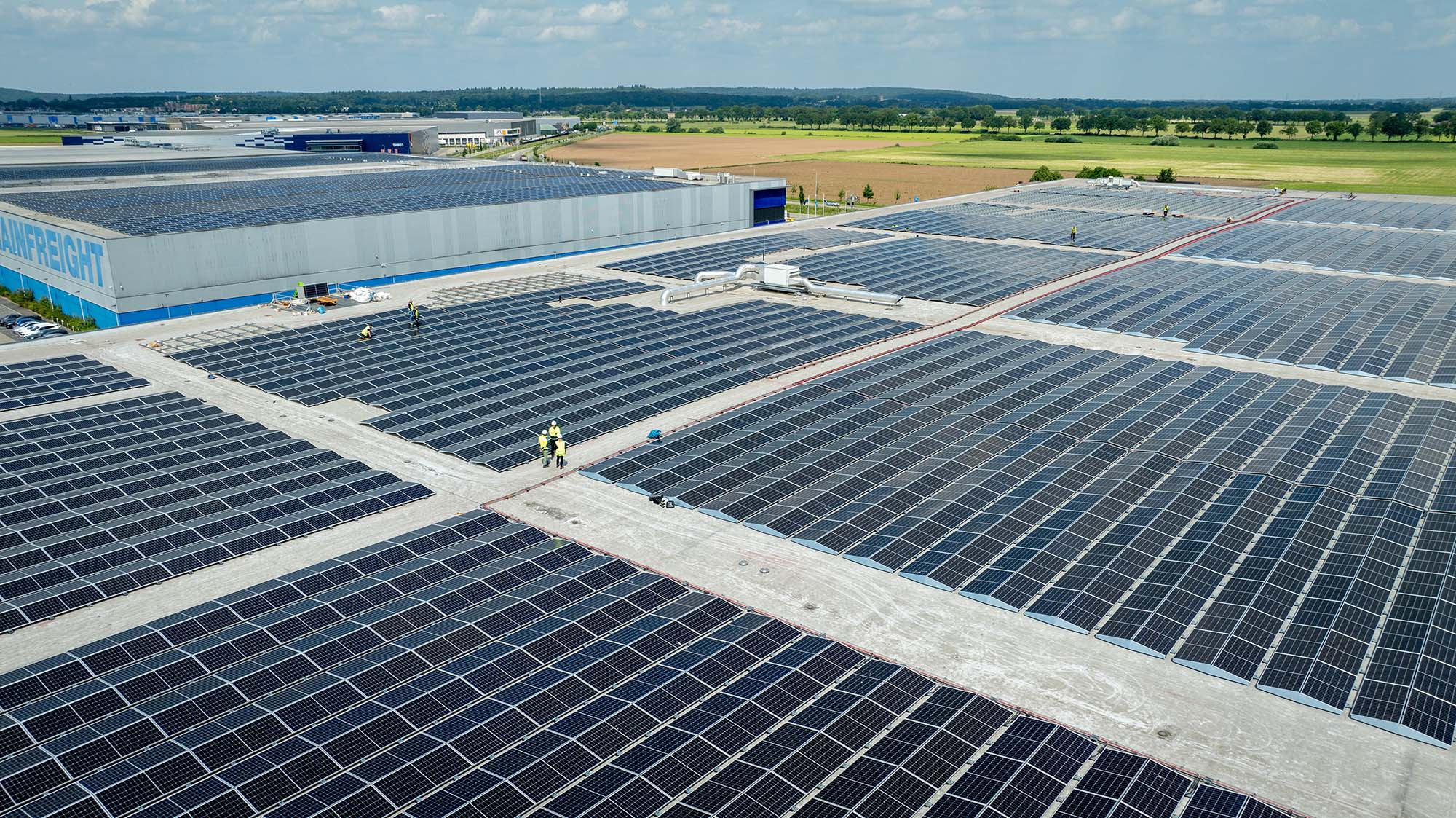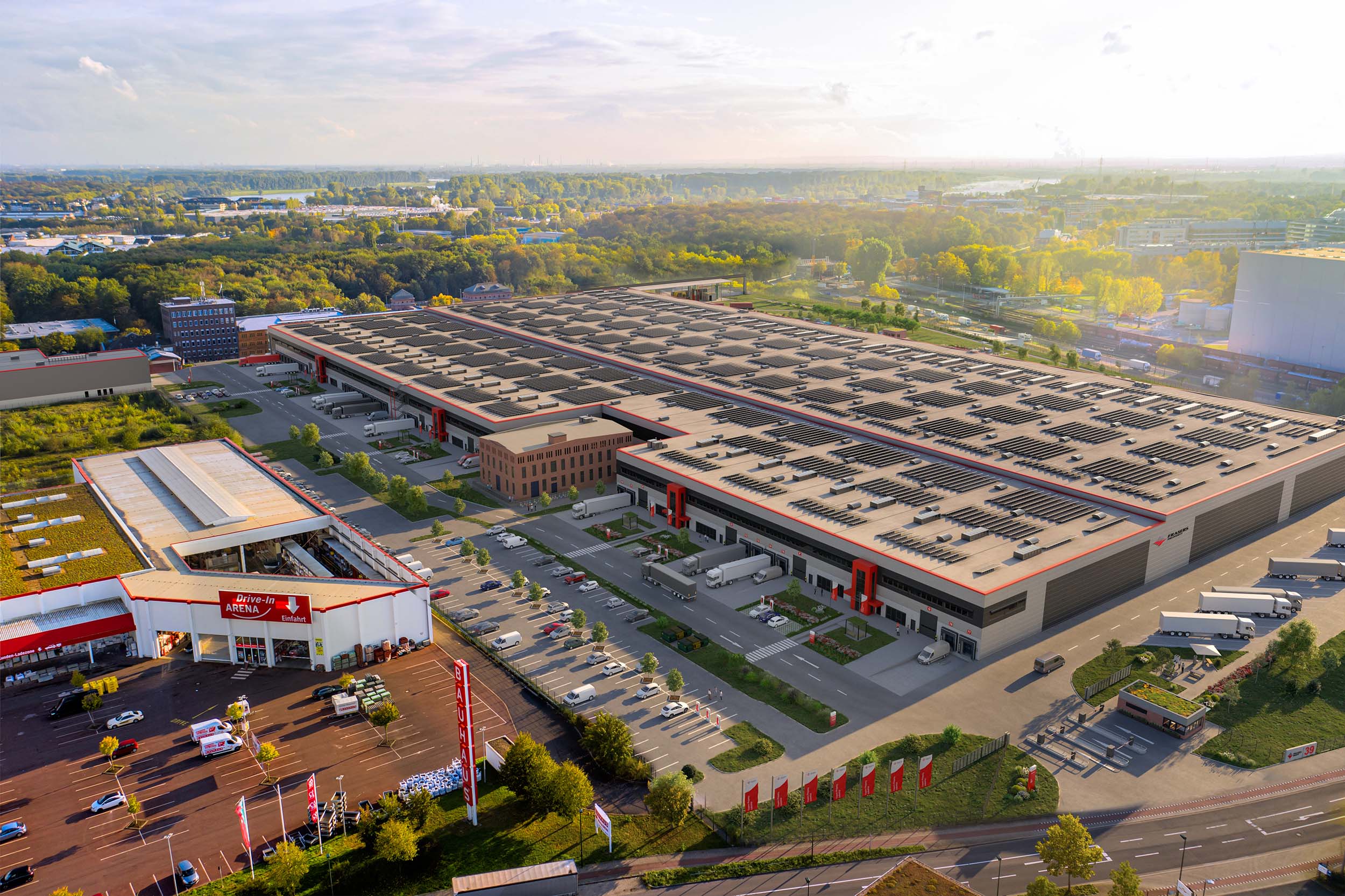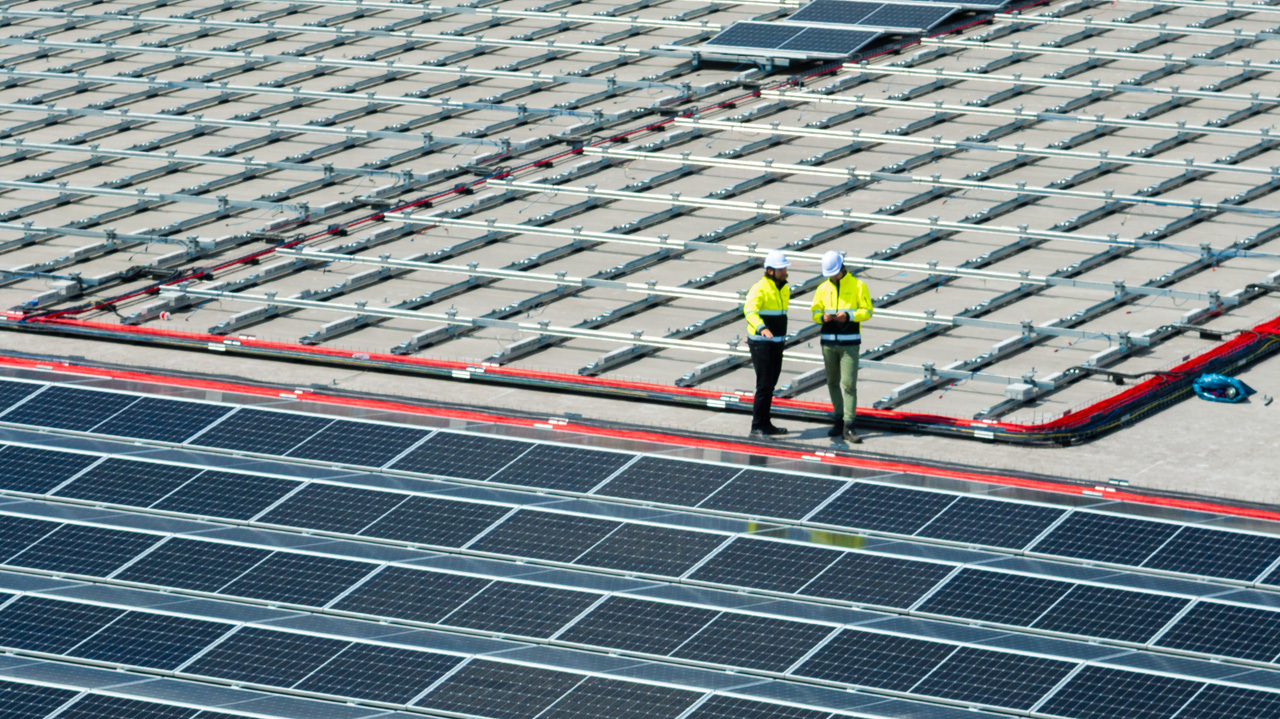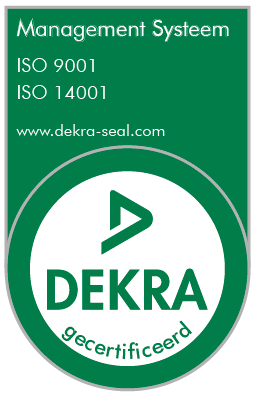At this year’s Expo Real in Munich, Panattoni, leading European developer of logistics and industrial real estate, partnered with Sunrock, leading European developer of photovoltaic (PV) systems for large rooftops, to host a panel discussion on the crucial role of logistics real estate in advancing the energy transition. The discussion, titled “Logistic Real Estate as the Enabler of the Energy Transition for the Economy of the Future,” was moderated by Charles Kingston, publisher and editor-in-chief of REFIRE, a platform specializing in German real estate for institutional investors. The panel featured:
- Dr Anna Heimsath, Head of Department “Analysis, PV Modules and Power Plants” at Fraunhofer Institute for Solar Energy Systems ISE
- Kuno Neumeier, CEO of LOGIVEST
- Jeroen Gerritsen, Managing Director Panattoni Belgium & Netherlands
- Georg Brenninkmeijer, Managing Director Sunrock Germany
Challenges for the Logistics Real Estate Sector
The panel began by addressing the challenges the logistics real estate sector is facing, considering the current geopolitical situation that has driven up energy costs. This context has underscored the importance of integrating logistics operations with energy management strategies. The ongoing energy crisis has further highlighted existing dependencies, underscoring the need for local solutions. The installation of photovoltaic systems on rooftops can help mitigate this issue while also providing power for e-mobility. Moreover, regulatory requirements for logistics real estate are becoming increasingly stringent. An integrated system that combines photovoltaic and battery solutions can facilitate local energy generation, enhancing independence and cost-effectiveness, while also helping to meet sustainability requirements, such as ESG criteria.
Future Potential of PV Systems
The conversation then shifted to the potential of PV systems for the future. Kuno Neumeier noted that from 2012 to 2022, around 30 million square meters of roof space suitable for PV installations were built in Germany. Properly equipped, these roofs could generate up to 2.5 terawatt-hours of solar energy – enough to charge all registered electric vehicles in Germany for 18,000 kilometers, leading to an annual reduction of nearly one million tons of CO2 emissions.
However, not all existing buildings are suitable for PV installations, and one of the main challenges is ensuring the necessary infrastructure to feed energy into the grid. Simplifying administrative procedures and increasing grid flexibility are also critical steps toward fully harnessing PV’s potential. Balancing energy consumption and production is also key to maximizing PV effectiveness. Another challenge is convincing stakeholders, such as investors, of the business case for PV systems. During the discussion, it was emphasized that various business models exist for integrating PV into logistics real estate, with different approaches depending on customer needs. While the specifics vary on a case-by-case basis, it’s generally estimated that photovoltaic systems can cover 40 to 60 percent of local energy consumption, with battery energy storage systems enhancing this by an additional 15 to 25 percent. This consistently creates added value for both owners and tenants.
The Transformative Power of PV
The transformative potential of solar energy in logistics real estate was exemplified by Jeroen Gerritsen, who highlighted the Panattoni Park Heerlen distribution center in the Netherlands. Here, Sunrock installed a solar power system across 65,000 square meters of roof space, supplying clean energy not only to the resident tenant but also to the Ikazia Hospital in Rotterdam, located over 150 kilometers away. “This shows how logistics properties can take on a new sustainable role, benefiting parties beyond the tenant and owner,” Jeroen Gerritsen explained.
Overcoming Grid Congestion
Towards the end of the discussion, the conversation returned to one of the sector’s most pressing challenges: grid congestion. Infrastructure limitations often hinder the full potential of PV systems. While there is demand for large-scale systems, obtaining the necessary grid feed-in approvals is a significant hurdle. Battery storage solutions help to alleviate this issue, but in the Netherlands, for instance, nearly 100 percent of the grid capacity is already locked down. “We do want to build big systems”, Georg Brenninkmeijer emphasized. “In some cases, however, logistics properties can only receive a household-level connection to the grid, severely limiting their capabilities. Therefore, a solution must be found, and political stakeholders will need to be involved to make progress.”
A Positive Outlook for the Future
Despite the challenges, the panel concluded on a positive note. Photovoltaic systems are poised to become indispensable in logistics real estate – the market requirements for this are obvious in the form of increasingly important sustainability requirements, the importance of security of energy supply and even energy autarky. There is also the opportunity to increase stakeholder acceptance, especially among municipalities – “done right, we can create an even more attractive asset class”, as Kuno Neumeier put it. Additionally, emerging innovations, such as integrated local energy systems, will lead to greater independence and help address sustainability criteria as well as increasing regulations. Dr Heimsath concluded with an optimistic outlook, emphasizing that “challenges must be met with solutions” – a sentiment that resonated with all panelists and the audience.



